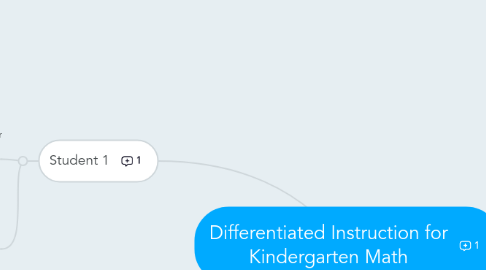
1. Student 1
1.1. Teaching Strategy: Sarah has good motor skills and seems to enjoy gathering objects from around the room and placing them together. I think a teacher could use this to their advantage for this objective. The teacher could ask Sarah to group objects from around the classroom based on their similarities and differences. For example, she could be asked to put all of the blue blocks on one side of her desk, and green blocks on the other side.
1.2. Teaching Strategy: Sarah responds positively to music. I think an effective strategy for Sarah would be to create a “sorting song” so she knows that it is time to work on her sorting activities. A simple song could be written in the tune of an already well known song (like “Twinkle Twinkle”) that the class can sing together to get ready for their math lesson, or one could be found on YouTube. It could be fun for the rest of the class as well!
2. Students With Autism
2.1. Student 2
2.1.1. Teaching Strategy: Because Chris is very independent, I think it is fair to allow him to work on his own for certain group activities. It can be scary and over stimulating for a student with autism to be thrown into a social situation. However, I do think it is important to slowly introduce him to working with other students so he can become more comfortable with socializing.
2.1.2. Teaching Strategy: Chris is very good at doing puzzles. I think an activity that could help Chris succeed in this objective is to use puzzle pieces as the objects that need to be sorted. He can be asked to sort the pieces by shape, color, or size. When he is finished, he can play with the puzzle.
3. Students With ADHD
3.1. Student 1
3.1.1. Teaching Strategy: For this objective, I think it would be helpful to Jimmy if I created visual directions for an assignment. When it comes to verbal directions, Jimmy gets distracted and does not retain the information. Visual directions would be effective because he responds positively to visual information and he shows understanding. An example of visual directions is to create a poster board with objects grouped by similarities. This will show Jimmy that he needs to sort his objects into like categories.
3.1.2. Teaching Strategy: It is important to decrease the amount of distractions that could cause Jimmy to leave his work. I think it would be best to have him seated close to the teacher so he can be watched over and easily guided back to his assignment if he becomes sidetracked.
3.1.3. Teaching Strategy: I think because Jimmy is a visual learner, a computer game that follows this objective would be fun and engaging for him, and help him learn in a way he is comfortable.
3.2. Student 2
3.2.1. Teaching Strategy: Because Samantha sometimes displays aggressive behavior, I believe it is important to put a behavior chart in place for her. This provides Samantha with visual information on how she is behaving. It also helps the teacher keep track of her behavior and keeps them informed on whether she needs to be diverted from a situation or needs help controlling her behavior.
3.2.2. Teaching Strategy: Samantha is very calm when she colors and has trouble with her writing skills. In order for her to be successful in this objective, I think it would be helpful to her if I created an assignment for her where she could color or draw. For example, she could color or draw objects based on their similarities and differences instead of doing written descriptions. This keeps the assignment engaging for her because she is doing something she enjoys, and saves the writing practice for when she can work on it with a mentor on an individual basis.
